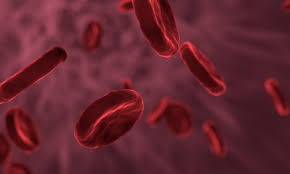
Breaking News
 Victor Davis Hanson: What the Media Won't Tell You About John Bolton FBI Raid
Victor Davis Hanson: What the Media Won't Tell You About John Bolton FBI Raid
 Giving Ukraine a US Security Guarantee Risks National Suicide
Giving Ukraine a US Security Guarantee Risks National Suicide
 The Oklahoma City Bombing: A Lesson in Government Lawlessness
The Oklahoma City Bombing: A Lesson in Government Lawlessness
 The Insurrection Act – Can the POTUS Deploy the National Guard to America's Cities?
The Insurrection Act – Can the POTUS Deploy the National Guard to America's Cities?
Top Tech News
 NVIDIA just announced the T5000 robot brain microprocessor that can power TERMINATORS
NVIDIA just announced the T5000 robot brain microprocessor that can power TERMINATORS
 Two-story family home was 3D-printed in just 18 hours
Two-story family home was 3D-printed in just 18 hours
 This Hypersonic Space Plane Will Fly From London to N.Y.C. in an Hour
This Hypersonic Space Plane Will Fly From London to N.Y.C. in an Hour
 Magnetic Fields Reshape the Movement of Sound Waves in a Stunning Discovery
Magnetic Fields Reshape the Movement of Sound Waves in a Stunning Discovery
 There are studies that have shown that there is a peptide that can completely regenerate nerves
There are studies that have shown that there is a peptide that can completely regenerate nerves
 Swedish startup unveils Starlink alternative - that Musk can't switch off
Swedish startup unveils Starlink alternative - that Musk can't switch off
 Video Games At 30,000 Feet? Starlink's Airline Rollout Is Making It Reality
Video Games At 30,000 Feet? Starlink's Airline Rollout Is Making It Reality
 Automating Pregnancy through Robot Surrogates
Automating Pregnancy through Robot Surrogates
 Grok 4 Vending Machine Win, Stealth Grok 4 coding Leading to Possible AGI with Grok 5
Grok 4 Vending Machine Win, Stealth Grok 4 coding Leading to Possible AGI with Grok 5
Scientists In Britain May Have Just "Accidentally" Found A Cure For Cancer

Researchers at Cardiff University that were in the midst of analyzing blood from a bank accidentally stumbled into an "entirely new type of T-cell", according to The Daily Wire. The new cell carries a "never before seen" type of receptor that acts like a grappling hook, latching on to most human cancers.
Prior therapies, called CAR-T and TCR-T, which use immune cells to attach to HLA molecules on cancer cells' surface, are incapable of fighting solid tumors, the article notes. HLA molecules vary in people, but the new therapy instead attaches to a molecule called MR1, which does not vary in humans. This gives the therapy a chance of fighting most cancers.
It also means people could share the treatment, which could allow banks of cells to be stored and offered quickly, as needed.
The treatment has already worked on lung, skin, blood, colon, breast, bone, prostate, ovarian, kidney and cervical cancer cells. The study stated:
Human leukocyte antigen (HLA)-independent, T cell-mediated targeting of cancer cells would allow immune destruction of malignancies in all individuals. Here, we use genome-wide CRISPR-Cas9 screening to establish that a T cell receptor recognized and killed most human cancer types via the monomorphic MHC class-I related protein, MR1, while remaining inert to noncancerous cells … These finding offer opportunities for HLA-independent, pan-cancer, pan-population immunotherapies.

 HERE COMES THE MOTHERSHIP
HERE COMES THE MOTHERSHIP

